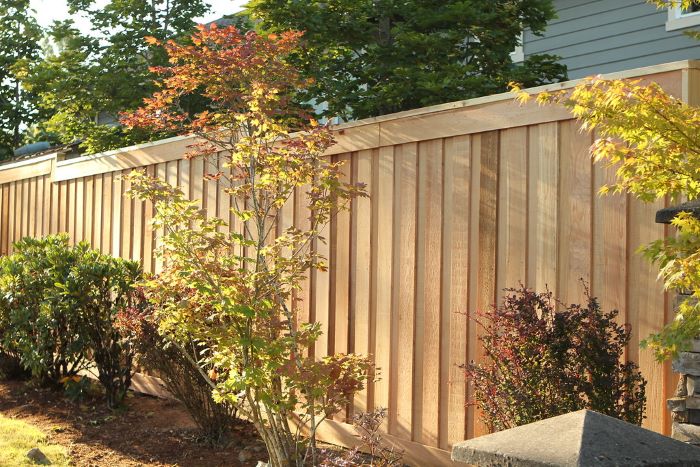
The Pros and Cons of Cedar Fencing
Wood fencing is very popular in many parts of the world, and while there are many options for wood fences out there, cedar fencing is often one of the top choices.
However, like any fence system, cedar fencing has both pros and cons, and it’s worth considering both before you make a decision.
The Benefits of Cedar Fencing
We always try to look on the bright side of everything, so let’s start with the benefits of cedar fencing first.
1. It Looks Great
Cedar fencing starts out a rich orange shade, and then, over time, it fades to a muted, weathered grey-brown. Unlike other kinds of wood fences, a cedar fence will look great at every stage of its life, so you don’t have to do any painting or staining to make it more appealing.
2. Better Grain
Cedar fence has a tighter grain than most other kinds of wood fence, and it doesn’t usually have many knots. So you don’t have to worry about knots falling out, leaving peepholes in your fence!
3. Naturally Insect Resistant
When you’re installing a wood fence, bugs are always a big issue. Insects can damage a wood fence very quickly, and that’s why when we install things like spruce or fir, we often have to pressure treat them before we can use them for fencing.
Cedar has been used for centuries to build furniture, including trunks and chests, because of its known insect-repellent properties. So it tends to keep most bugs at bay.
4. There Are Several Types of Cedar
There are several types of cedar that are available for wood fencing projects, including western red cedar, Japanese cedar, and white cedar. There are also different grades of cedar, so you might be able to find a variety of options for your wood fence project.
The Drawbacks to Cedar Fencing
Everything in life has both pros and cons, and cedar fencing is no different. Here are some things you might want to consider when thinking about your cedar fence project.
1. It’s More Expensive
Cedar is quite a lot more expensive than spruce, fir or pine, so if you’ve got your heart set on cedar fencing, you can expect to pay more for your project.
2. It’s Not Rot Resistant
While cedar fencing is bug resistant, it’s not rot resistant, and like any wood fence product, if it’s exposed to a lot of moisture or standing water, your cedar fence will rot over time.
3. It’s Hard to Match Repairs
Every wood fence will, from time to time, require repairs and replacement boards. Or you might simply want to add a gate or change the fence line slightly. Because cedar fence fades to a shade of grey over time, any new, deep orange boards and components you add to the fence will be very visible until they start to fade, too. This makes repairing a cedar fence a little trickier.
4. Harder to Source
Finally, when it comes to cedar fencing, it can be harder to source than spruce, pine or fir, and depending on where you live and which suppliers you use, you might have to deal with longer order lead times.
Get All Your Options
Even if you’ve got your heart set on cedar fencing, and you know it’s what you want, it’s always a good idea to get all your options before you decide.
Ask fence companies for quotes on cedar fencing, ordinary treated wood fencing, composite fencing and vinyl fencing, and then compare everything – not just pricing, but warranties, longevity, design options and other factors.
The more information you have at your fingertips when you’re choosing a fence, the better the results are likely to be.


